#cute animal facts
Explore tagged Tumblr posts
Text
fun fact
red pandas use their tails as pillows

#cute#cute animals#animals#cute animal#red panda#fluffy#panda panda panda#animal facts#cute animal facts
14 notes
·
View notes
Text

#funny#lol#haha#humor#meme#memes#animal#animals#cat#cats#kitty#kittens#pet#pets#caturday#cats of tumblr#baby animals#cute animals#facts
45K notes
·
View notes
Text
the same reason we need dogs, op
Why do cheetas need dogs it’s so funny. This animal that would mever see a dog in the wild needs a puppy friend or it will go absolutely ape shit
435 notes
·
View notes
Text
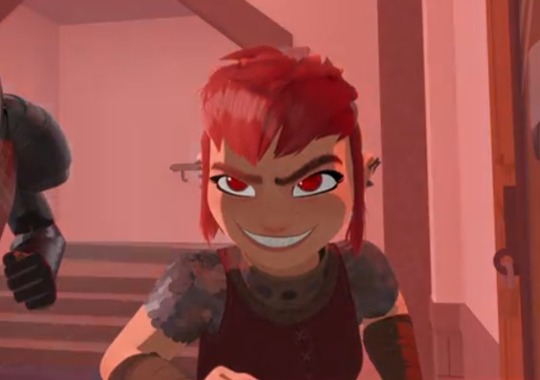


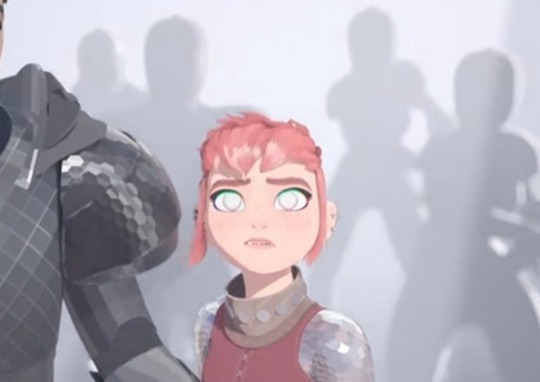
can we talk about how AWESOME it is when the light hits nimona's eyes?
It's the same effect you get when you take a flash photo of an animal!!! it is an incredible detail to demonstrate that she is not human !!! I loved it
#in fact it's super noticeable even for them since the same thing doesn't happen with other people's eyes#so much so that even ambrosius notices when he looks at her#I thought this was a very cute detail#nimona#nimona movie#nd stevenson#nimona brain rotting#animation brain rotting
36K notes
·
View notes
Text

Need a tiny cephalopod to brighten your day? Meet the bobtail squid (Euprymna berryi)! Also known as the hummingbird squid, this critter typically grows only up to 2 in (5 cm) in length; females are larger than males. This species lives in Indo-Pacific waters, inhabiting the ocean floor where it burrows beneath sand to rest or hide when under threat. Its striking color comes from chromatophores, or pigment-holding cells, distributed throughout its body.
Photo:maractwin, CC BY-NC-SA 4.0, iNaturalist
#science#nature#natural history#animals#fact of the day#squid#cephalopods#cephalopod#did you know#ocean life#marine biology#marine life#cute animals
4K notes
·
View notes
Text

#funny#lol#haha#humor#meme#memes#tweet#twitter#animal#animals#cute animals#baby animals#dank memes#dark humor#nature#naturecore#facts
5K notes
·
View notes
Text
Wool-Carder Bees: these solitary bees harvest the soft, downy hairs that grow on certain plants, rolling them into bundles and then using the material to line their nests

Wool-carder bees build their nests in existing cavities, usually finding a hole/crevice in a tree, a plant stem, a piece of rotting wood, or a man-made structure, and then lining the cavity with woolly plant fibers, which are used to form a series of brood cells.
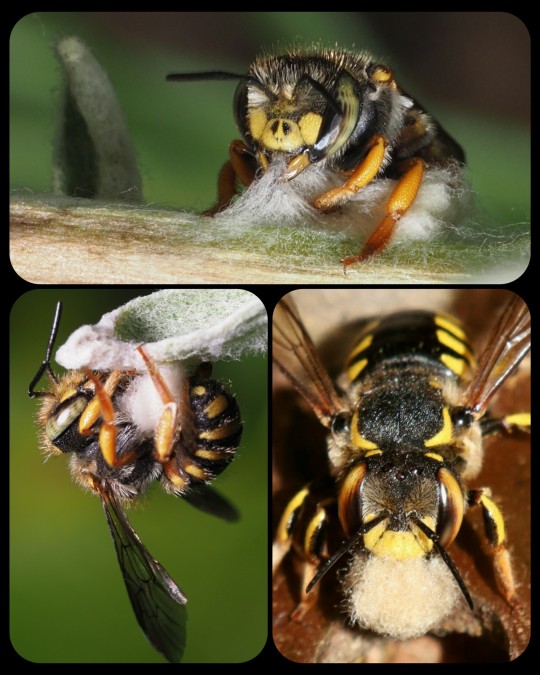
The fibers (known as trichomes) are collected from the leaves and stems of various plants, including lamb’s ear (Stachys byzantina), mulleins, globe thistle, rose campion, and other fuzzy plants.
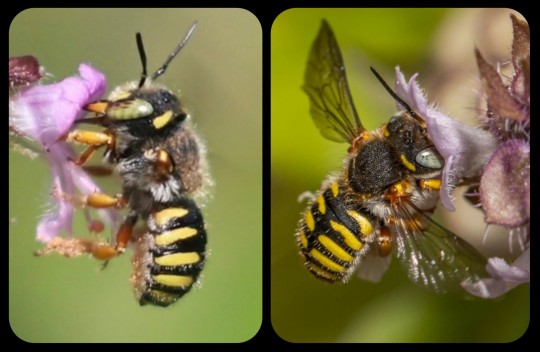
From the University of Florida's Department of Entomology & Nematology:
The female uses her toothed mandibles to scrape trichomes off fuzzy plants and collects a ball of the material under her abdomen. She transports these soft plant fibers to her selected nest site and uses them to line a brood cell. Next, she collects and deposits a provision of pollen and nectar into the cell, enough pollen to feed a larva until it is ready to pupate. Lastly, she lays a single egg on top of the pollen and nectar supply before sealing the cell. ... She will repeat this process with adjoining cells until the cavity is full.
These are solitary bees, meaning that they do not form colonies or live together in hives. Each female builds her own nest, and the males do not have nests at all.
Female wool-carder bees will sometimes sting if their nest is threatened, but they are generally docile. The males are notoriously aggressive, however; they will often chase, head-butt, and/or wrestle any other insect that invades their territory, and they may defend their territory from intruders up to 70 times per hour. The males do not have stingers, but there are five tiny spikes located on the last segment of their abdomen, and they often use those spikes when fighting. They also have strong, sharp mandibles that can crush other bees.
There are many different types of wool-carder bee, but the most prolific is the European wool-carder (Anthidium manicatum), which is native to Europe, Asia, and North Africa, but has also become established as an invasive species throughout much of North America, most of South America, and New Zealand. It is the most widely distributed unmanaged bee in the world.

A few different species of wool-carder bee: the top row depicts the European wool-carder, A. manicatum (left) and the spotted wool-carder, Anthidium maculosum (right), while the bottom row depicts the reticulated small-woolcarder, Pseudoanthidium reticulatum, and Porter's wool-carder, Anthidium porterae
Sources & More Info:
University of Florida: The Woolcarder Bee
Oregon State University: European Woolcarder Bees
Bohart Museum of Entomology: Facts about the Wool Carder Bee (PDF)
Bumblebee Conservation Trust: A. manicatum
World's Best Gardening Blog: European Wool Carder Bees - Likeable Bullies
Biological Invasions: Global Invasion by Anthidium manicatum
#entomology#hymenoptera#apiology#melittology#bees#woolcarder bees#nature#insects#arthropods#science#solitary bees#european woolcarder#anthidium#animal facts#cool bugs#cute animals
3K notes
·
View notes
Photo
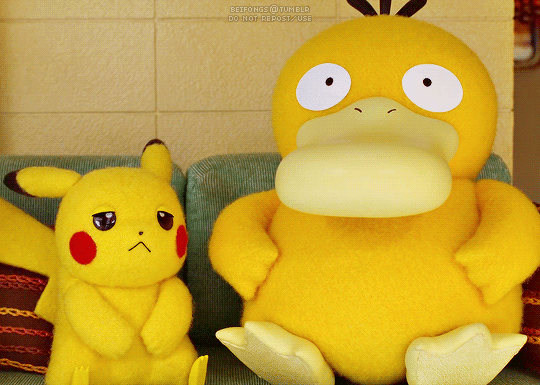

It looks like they fell asleep.
#Pokemon#Pokemon Concierge#Pikachu#Psyduck#pokegraphic#pokemonedit#animationedit#*mine#LOOK AT THE BABIES!!! 🥺#omg this was such an incredibly cute and wholesome series#and the fact that it's stop motion animation really only adds to the charm of it#my only complaint is that it was WAY too short!!#like it was literally over in the blink of an eye#i guess i expected the episode count to be similar to that of Rilakkuma and Kaoru#so i was shocked to find out there were only 4 episodes...
6K notes
·
View notes
Note
cutest shark facts?


Nurse sharks and white tip reef sharks form a pile and cuddle!
It's believed to be a form of social bonding and has helped challenge the "lone shark" assumption, allowing us to learn more about shark ecology and interaction!
#marine biology#marine ecology#animals#science#biology#animal facts#wildlife#marine life#ocean#fun facts#fish#shark#sharks#nurse shark#white tip reef shark#cute#cute facts#cute animals
2K notes
·
View notes
Text
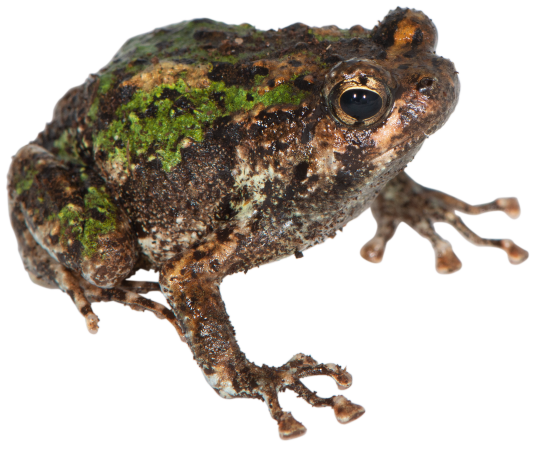
I put it to you that Scaphiophryne marmorata is peak frog.
Why?
Well first, it's pretty round, which is key.
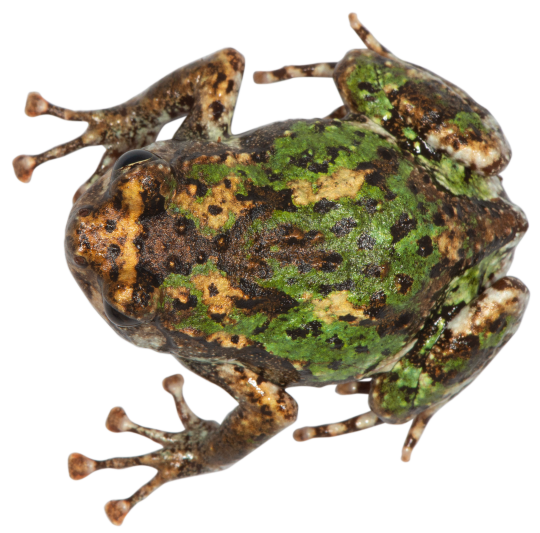
Now get a load of those fingers.
Big, expanded discs at the end, ideal for climbing.
But what's happening back there with those toes? No discs there. Those are good for walking and hopping around on the ground.
Now, let's gently turn them over

First, excellent tum, 17 out of 10, no notes.
But what's that at the base of the foot? Those big projections? Yep, those are spades. This climbing, hopping frog is an excellent digger!
I like to think of these Scaphiophryne as all-terrain frogs. They're basically good at everything. They defy our categorical labels of 'arboreal', 'terrestrial', or 'fossorial', and say 'por qué no los tres?'—but in Malagasy, so 'nahoana no tsy izy telo?'
#frogs#animals#cute#biology#science#Scaphiophryne marmorata#Scaphiophryne#actually the fact that these frogs are hard to categorise makes them a pain in the ass to study sometimes#because the methods we have do not really allow for complexity beyond simple categories#I feel sure I have posted something very similar to this post before#but oh well#this is a Scaphiophryne marmorata fan blog#other Scaphiophryne are good too#this is what peak performance looks like#now if someone would only fund the grant I applied for to prove it#that would be grand
2K notes
·
View notes
Text

#funny#lol#haha#humor#meme#memes#animal#animals#cats#dogs#pet#pets#baby animals#cute animals#wholesome#aww#cute#facts
4K notes
·
View notes
Text
squealing about this boop function. I literally made a sound akin to a squeaky toy. it brings me much joy. the cat paws. the animation. oh. oh. joy. i've never felt such joy in my life. in the same vein,
cat fun facts! (cat pics at the end)
Cat whiskers are immensely sensitive, about as sensitive as human fingertips! Cats use their whiskers to feel things around them and their face. Cats can actually get a type of information overload, called whisker fatigue, from their whiskers touching too many things/being touched too often, which is why it is recommended to use wide, flatter feeding + water dishes for your cats, and to avoid touching their whiskers unnecessarily.
Cat Paws have 3 types of Beans (paw pads)! Digital, Metacarpal and Carpal pads. The metacarpal pad is located in the center of the paw, the digital pads are located upon their main four toes, and the carpal pad is located on the staff of the cat's paws/legs (often referred to as their thumbs!) They also have what is called a "dew claw", located on the inner side of the front paws (which is more like a thumb if you ask me.) Cats also usually have 18 toes, but many cats have more than just 18. (usually when dew claws are present on the back paws)
Cat Paw Pads are also absorbent of shock and sound, and can feel texture, pressure and temperature! It's important to make sure your fluffy friend's paw pads aren't overgrown with fur, as this can affect their grip and effectiveness. (Most cats can do this themselves via grooming, but some cats can't!)
Cat's Ears have 36 muscles in the outer ear! (while we humans only have 6). They can rotate up to a full 180 degrees, helping cats pinpoint the location of sounds. Cats can amplify sound waves between 2,000 and 6,000 hertz, and can hear sounds up to 62 kHz, which is 1.6 octaves above humans, and 1 octave above that of a dog. Cats are wonderful creatures! We're very lucky to have them as our companions. If you have a fluffy friend, give 'em a lil pat for me, for being such an amazing creature. And, as a treat, here are some of my fluffy friends. (1 and 2) The late Ms. Mojo Catface, (grey cat in 3,4,5,6) Mr. Spyro Needlepaw and (black cat in 3,5,7) Kitka Meowski, The Russian Queen of Day Drinking Vodka.
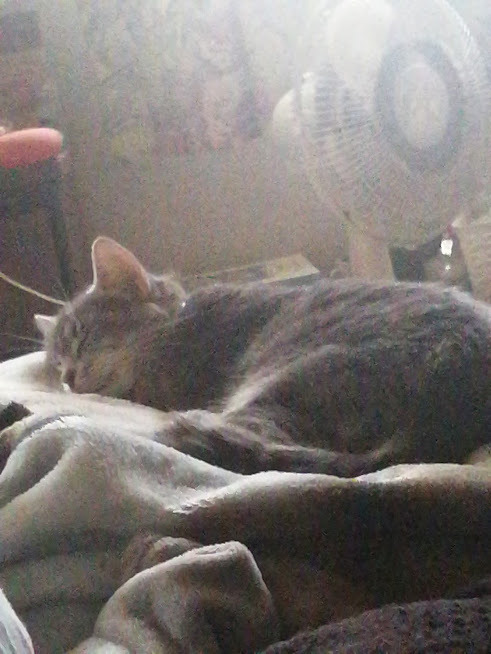



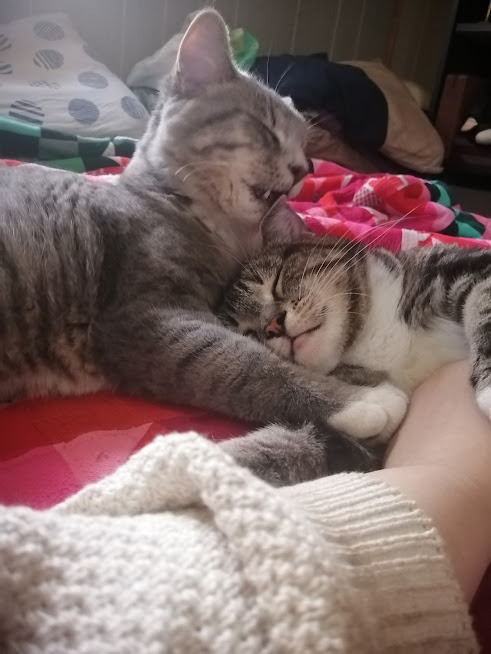


#boop o meter#boop#boop boop-a doop boop!#autism#autistic#autistic joy#cat#cats#cat facts#fun facts#animal facts#cat pictures#cat photos#cute cats#cat pics#catblr#kitty#april fool's day#april fools#easter monday
949 notes
·
View notes
Text
Living together.
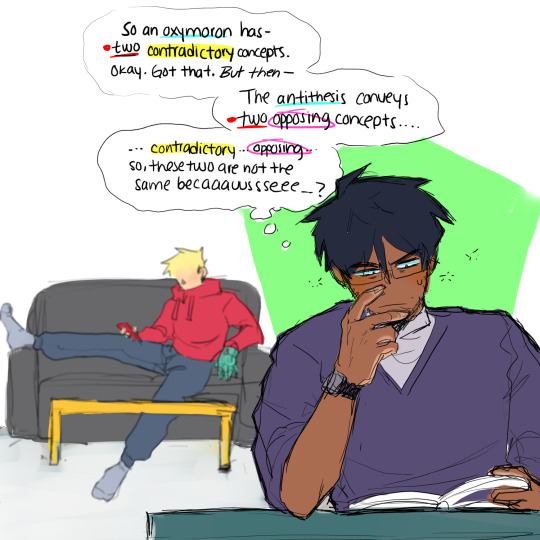





The snail video if you are interested :)
#showing random videos you found abt an animal fun fact is a love language if you didn't know btw#not understanding a topic and starting with drop out ideation is part of the journey when you are a student.#it evolves later (or simultaneously) with wanting to quit your job. in WW case both apply at the same time#vash is the kind of guy to really be marveled abt every little new piece of information he gets in his hands#and the 1st person he thinks abt to share his knowledge and joy with is ofc ww#the fact that they live together only amplified this by a thousand#ww tends to hear him out and also watch more videos with him. rn he's too busy weighing studying vs quitting#I really enjoyed drawing Vash in the bg for this one he's so cute#i hope its noticeable how much fun i am having by putting them through all of this.#why didn't i do this more since earlier???#aesthetics be damned. put them THROUGH -IT-#trigun#vash the stampede#trigun stampede#nicholas d wolfwood#vashwood#trigun fanart#vash#wolfwood#nicholas trigun#lenssi draws#Trigun Uni! AU#made some very light changes that were bothering only me specifically. you might not notice IWDFJK
467 notes
·
View notes
Text
Good thing there are good people &
😊🐈♥️
#facts of life#animals#pet#pets#pets lovers#animal lover#cat videos#cat#cats#cute animals#cute#cute cats#cats of tumblr#animals video#cozy#animal memes#meme#memes#cat memes#explore#cats lover#to live#love animals
556 notes
·
View notes
Text
Lophotriccus pileatus
Scale created pygmy tyrant
It is a species of bird in the family Tyrannidae.




It was given its name for the small crown-like ring of feathers on the top of its head.
They are found in Colombia, Ecuador, Costa Rica, Peru, Venezuela and Panama.
#ornithology#science#biology#halloween#birdblr#birds#wild birds#bird photography#interesting facts#animals#nature#interesting#earth#aesthetic#cute animals#birdwatching#cute as hell#i want one
286 notes
·
View notes
Text

Who’s this little ball of fluff? Meet the Tomtit (Petroica macrocephala). There are five subspecies of this bird; each inhabits a specific island or island group in New Zealand: North Island, South Island, the Chatham Islands, the Auckland Islands, or the Snares Islands. It munches on small invertebrates like spiders, beetles, and moths, as well as on the occasional fruit. It’s known for its curious personality, as it often perches on a branch to observe others or to scan the area for a meal.
Photo: Jon Sullivan, CC BY-NC 2.0, flickr
#science#nature#natural history#animals#did you know#fact of the day#birds#tomtit#cool animals#cute animals#new zeland#ornithology
821 notes
·
View notes